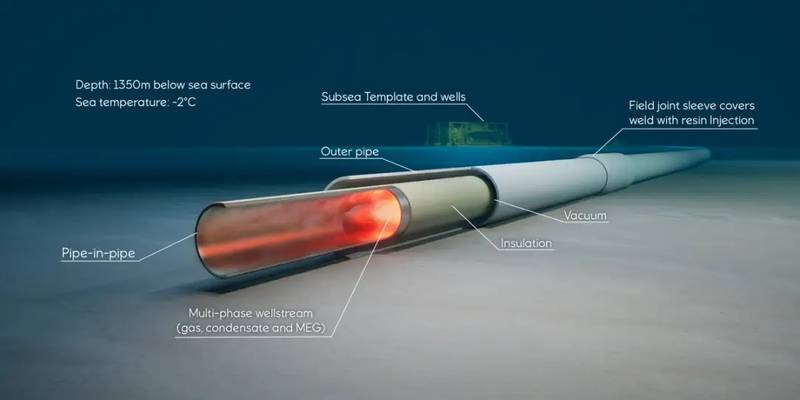Equinor Files Development Plan for $1,45B Irpa Deepwater Gas Discovery
OEDigital
November 22, 2022

The Norwegian oil and gas company Equinor has filed a plan for development and operation (PDO) for the Irpa offshore gas discovery, formerly known as Asterix, to the Norwegian Minister for Petroleum and Energy.
The gas discovery, sitting in the Norwegian Sea at a depth of 1350 meters, is located 340 kilometers west of Bodø.
The gas from the field will be phased into the existing Aasta Hansteen platform and transported to the Nyhamna gas processing plant via Polarled pipeline. From there, customers in the UK and continental Europe will get gas through the Langeled pipeline system. Irpa will extend the life of Aasta Hansteen by seven years, from 2032 to 2039. Aasta Hansteen came on stream in December 2018.
Expected recoverable gas resources are estimated at approximately 20 billion standard cubic meters, equivalent to 124 million b.o.e. or the consumption of nearly 2.4 million British households over a period of seven years. Irpa development illustration - Credit: Fred.Equinor ASA
Irpa development illustration - Credit: Fred.Equinor ASA
“The development shows that near-field exploration and utilisation of existing infrastructure provides good resource utilisation on the Norwegian continental shelf," says Grete Birgitte Haaland, senior vice president for Exploration and Production North.
“Irpa will maintain existing jobs at Aasta Hansteen, at the supply base in Sandnessjøen, at the helicopter base in Brønnøysund and at the operations center in Harstad,” says Haaland.
The development will have a total cost of NOK (Norwegian Krone) 14.8 billion in 2022-NOK (currently at around $1,45 billion), and the field is expected to start producing in the fourth quarter of 2026.
There will be joint production from Irpa and Aasta Hansteen through 2031, and then Irpa will continue to produce until 2039.
In 2020 and 2021, Aasta Hansteen operations created jobs equivalent to over 300 person-years, directly and indirectly, Equinor said.
“During the project period, there will also be local and regional deliveries, although the Irpa project is largely dependent on international specialist suppliers who can operate in water depths of 1350 metres,” says Hogne Pedersen, project director for Irpa.
'Challenging development' Irpa pipe-in-pipe solution. (Illustration: Kjell Morten Aas / Equinor ASA)
Irpa pipe-in-pipe solution. (Illustration: Kjell Morten Aas / Equinor ASA)
“It has been challenging to develop Irpa. Deep water and low temperatures on the seabed have necessitated the qualification of innovative new technology for pipelines, but good support in the partnership and increased demand for gas have made an investment decision possible,” says Pedersen.
The discovery will be developed with three wells and an 80-kilometer pipeline to the Aasta Hansteen platform. As the only planned deepwater development in Norway, the technical solution will contribute to new competence development in the industry, Equinor said.
Partners in the Irpa development are Equinor Energy AS (operator) 51%, Wintershall DEA (19%), Petoro (20%), Shell (10%).






